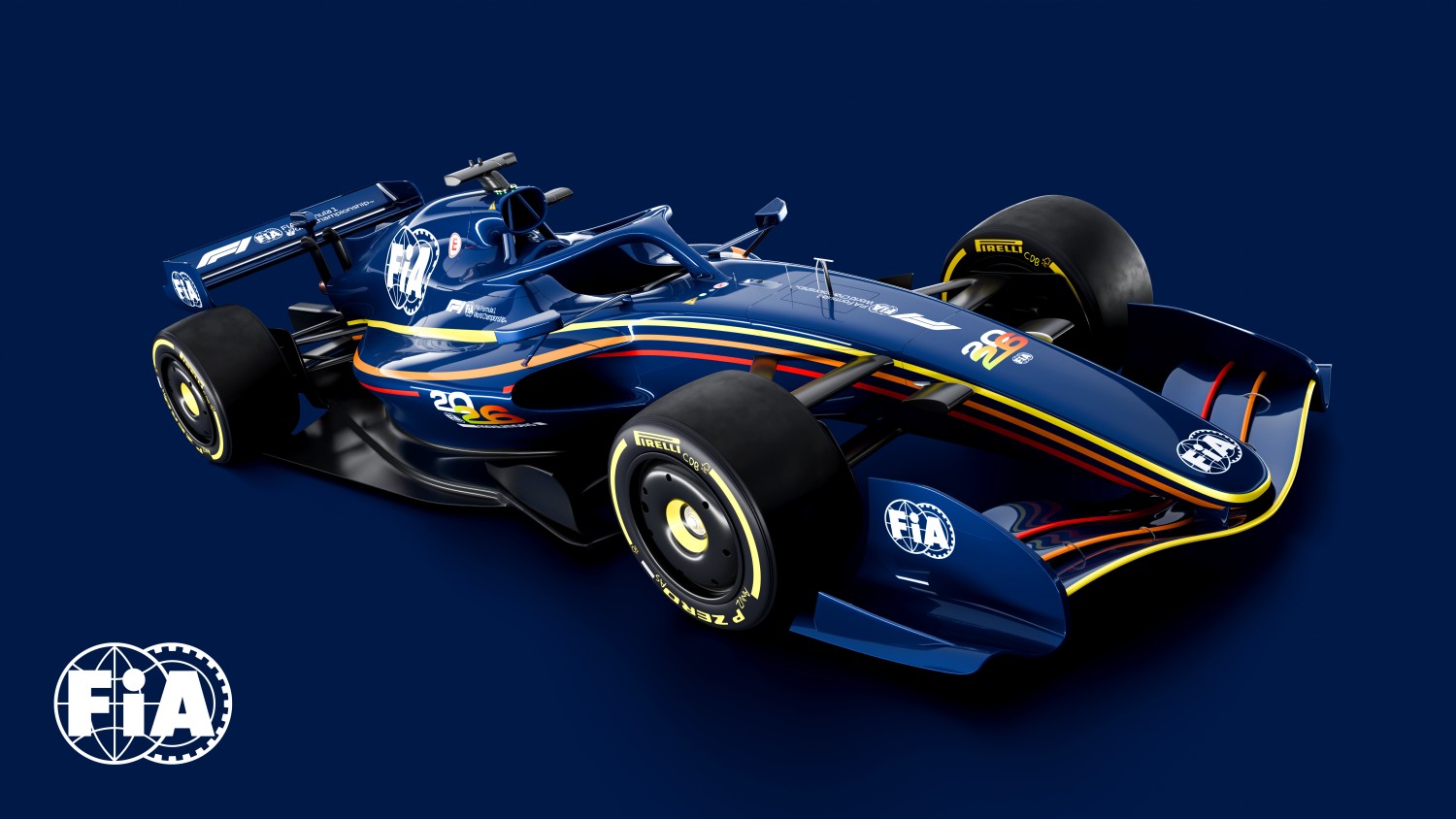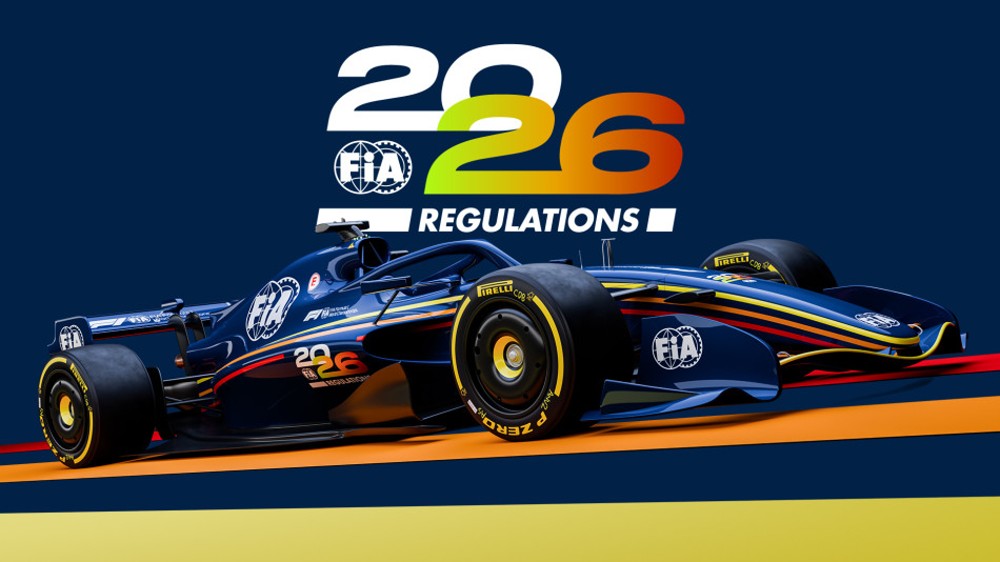F1 Editorial: The FIA should delay 2026 F1 Technical Regulations
It’s clear there is a lot of doubt surrounding the 2026 F1 Technical Regulations, and their rollout should be delayed to give the FIA and the teams an extra year to get it right.
–by Mark Cipolloni–
What’s the rush? Ahead of the Canadian Grand Prix, the best race of the year so far, the the FIA announced the outline of its sweeping 2026 F1 Technical Regulations.
The aims of the new rules are rooted in appeasing the ‘greenies’ but noble enough, the intention being to create more dynamic racing with more nimble machinery with around 50% of the power coming from the electric motor.

However, everything the ‘greenies’ propose costs a lot more, don’t work as well, and are rooted in fake science.
Related Article: Man-Made global warming is a scam – Climate Activist
But history tells us it’s guaranteed to ruin the competitiveness the first few years, because inevitably one team comes out of the box with a ‘better mousetrap.’
In the following years, teams learn from the innovations of their top rival, adapt them to their own cars and naturally level the field over time.
Formula 1 is now set to commit an identical sin, changing the rules after four years and just as the teams are beginning to converge.
“I think you’re not going to have days like today again,” Lando Norris said in Canada, where pole was decided in a dead heat between George Russell and Max Verstappen and where the top five drivers and four constructors were split by just 0.178 seconds.
“You’re not going to have days like the last few weeks probably in 2026, 2027, 2028 but maybe in 2028 or 2029.
“It’s how it’s always been. Every time there’s a regulation change, there are big gaps.
“Even at the end of the last era, 2021, things were getting closer again. You had still Red Bull against Mercedes, and everyone was getting closer. And then everything spread out again.“Red Bull had their time, and now it seems like we’ve been able to catch up.
“So just as we’re getting there, and I think probably looking ahead to next year already — next year should be an exciting year for everyone, just from first to last; I think it’s going to be exciting — that’s all going to go away in 2026,” because of the 2026 F1 Technical Regulations.
The downforce generated by a modern F1 car would drain the battery down the straights. It led to fears drivers would be left in the farcical situation of having to downshift in the middle of the straights just to charge the battery and maintain velocity.
The solution has been to slash downforce by 30 percent and to introduce movable aero that had shed drag by a further 25 percent down the straights, where the power unit is most load.
That’s led to its own quirky situation, with some estimates that cars will easily power past 370 kilometers per hour down even short straights but still be several seconds worse off overall because they’re so slow through the corners.
The FIA has admitted this will leave F1 lapping at a similar pace to Formula 2 — that is, between 10 and 15 seconds slower than today.
“I’ve spoken to some drivers who have driven it on the simulator — I haven’t — but they said it’s pretty slow,” Lewis Hamilton said. “So we will see whether it’s actually the right direction or not.”
The FIA is stuck between a rock and a hard place
The FIA has got itself stuck between a rock and a hard place trying to appease the ‘greenies.’ Whatever they finally agree to regarding the 2026 F1 Technical Regulations, the racing won’t be as good as it is today, and at the end of the day, that is all the pay customers (fans) want – close competitive racing.
FIA single-seater director Nikolas Tombazis said he was confident the governing body, together with the teams, could improve the rules before work began on the 2026 cars on 1 January next year.
“We have full expectation to make some steps up for performance, and that’s exactly why we’ve set the bar reasonably low to start with, so we can build up on that with the collaboration of the teams,” he explained.
“To increase the downforce of these cars is actually quite easy … and that’s exactly the step we want to take.
“I don’t think there’s any concern these cars will not be faster than F2 or anything like that. I think that would be 100 percent resolved by the time we are in the final regs.”
But increasing downforce will put the pressure back on the hybrid power unit and its reliance on 50% electrical power.
Related Article: F1 News: Radical tree-hugger 2026 cars will ruin F1
The easy solution would be to boost power from the internal combustion engine at the expense of the almost 50-50 split with electrical energy.
That, however, would require the power unit manufacturers to agree to change years into the design process.
“If there are some tweaks needed, I’m quite confident that PU manufacturers would help and be collaborative here,” Tombazis said.
He might’ve spoken too soon.
Mercedes boss Toto Wolff has unsurprisingly declared “the ship has sailed” on possible changes to engine rules. Did Mercedes have a head start on the engine regulations like they did with this hybrid era?
“There are teams that feel they are on the back foot and there are other teams that will feel … that they have done a good job,” he said, per Autosport. “That’s the normal kind of wrestling on regulations.
“I think on the chassis side there are tweaks that are possible that we need to do. But, on the engine side, the process is far too advanced.”
Horner, on the other hand, is encouraging the FIA to act.
“As I say, it is never too late,” he said. “[The FIA] have all the knowledge and simulations. You have got to look at what is best for F1 at the end of the day and what will produce the best racing.
“So trust in them and [Formula 1] to make the right calls. Whether that is required or not, they have got all the knowledge to know.”
Why does F1 need heavy hybrid engines at all?
As part of the 2026 F1 Technical Regulations, F1 is also rolling out carbon-neutral e-Fuel in 2026 meaning the internal combustion engine will not be putting any extra carbon emissions into the atmosphere. Given that, why do F1 cars need a heavy electric motor and battery? Isn’t the idea for cars to add zero carbon emissions to the atmosphere, no matter how you achieve it?
The drivers are begging for much lighter and smaller cars. If you eliminate the electric components and just run a clean burning internal combustion engine, you get:
- Faster cars
- More nimble cars
- Lighter and smaller cars = less fuel needed/burned
- Much lower cost to produce the cars – lowering the cost to the teams significantly
- Safer Cars – lighter cars have to dissipate less energy when impacting a barrier
- Better sounding screaming engines F1 fans are crying out for
- Much better and closer racing
- No active aero gimmicks needed that have no relevance to driver skill
Conclusion
Toto Wolff’s comments be damned, the 2026 F1 Technical Regulations as proposed make little sense. As a minimum, they should be postponed a year until 2027, or even 2028 when the Cadillac engine will also be ready.
This will give fans another year or two of extremely close racing before the new [2026] F1 Technical Regulations ruin it.
As for the Audi-Sauber team and their engine development, they certainly could run a Ferrari engine for another year or two and put Audi all over the engine cover like Alfa Romeo did. After all, from a commercial standpoint, at the end of the days it’s all about selling more passenger vehicles.
